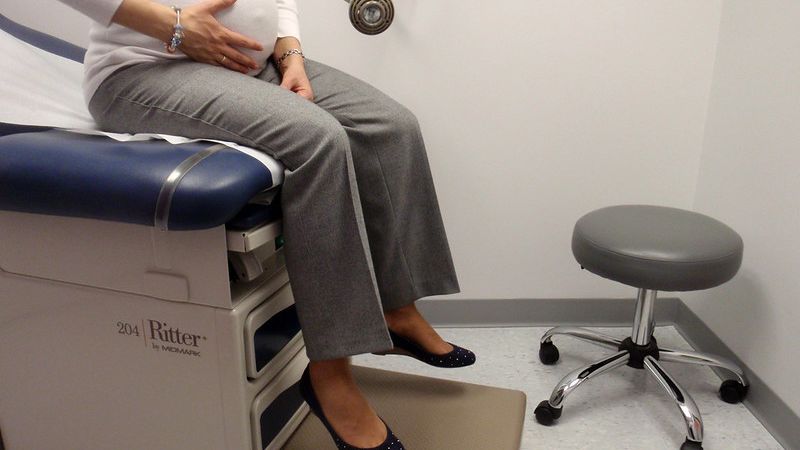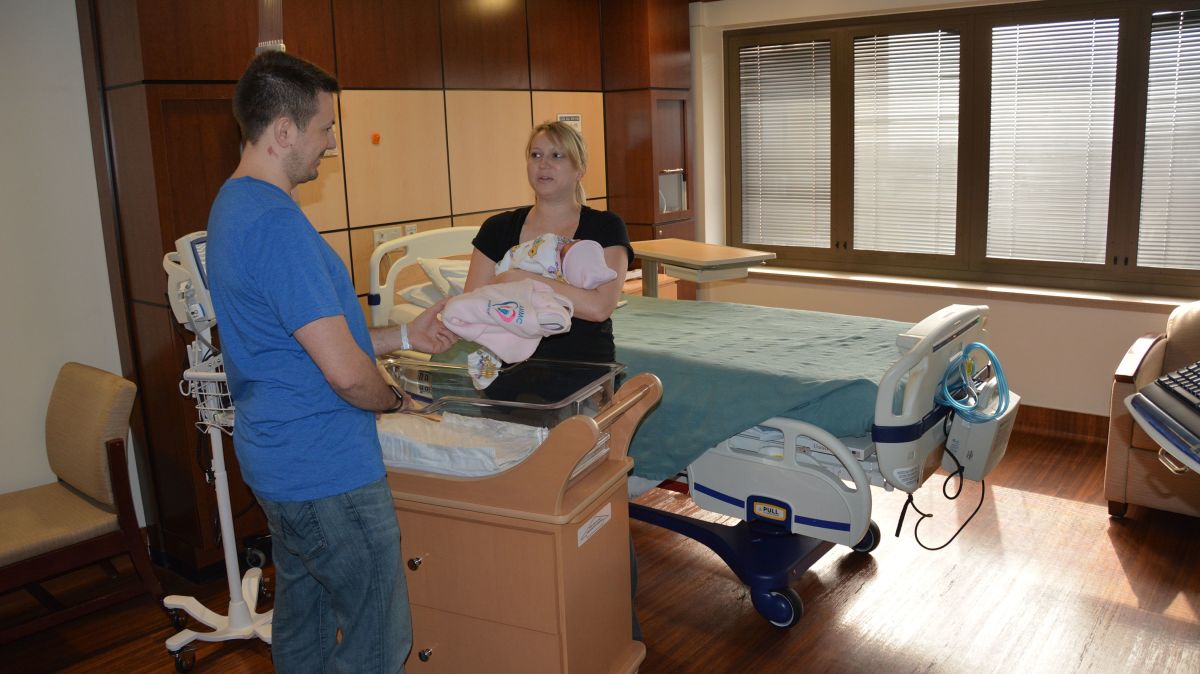Birth Plan

Although numerous websites offer helpful downloadable birth plan templates that have dozens of questions and categories of choices, women should first consider learning all they can about pregnancy, labor and delivery, all the options available to them, and how those options apply to their pregnancy – before completing these plans.
Some (not all) downloadable guides can phrase questions in certain ways that may make women feel they should lean one way or another. Any preconceived notions regarding certain interventions can lead women to feel unnecessary stress, guilt, or anxiety during labor and delivery.
Women should also recognize that their birth plan may change near term or during delivery, based on aspects of their health that may change, which in turn could affect their labor and delivery options.
If women become informed about all aspects of labor and delivery prior to completing their birth plan, the entire process becomes less overwhelming and women can be more confident in their decisions. Further, women can understand that although their plan may change, they can still have control over their birth experience by understanding their options and actively participating in those decisions.
Background
A birth plan is a tool that outlines a woman’s expectations for childbirth, as well as her overall experience. It is meant to be an outline – something easily remembered and a way to inform health care staff of a woman’s preferences for labor, delivery, newborn care, and postpartum recovery.
Women should keep in mind that any plan they create can change as pregnancy progresses, based the overall health of their pregnancy and their HCP’s recommendations. Women should also remember that HCPs deserve respect for their knowledge and experience, are there to help, and should be afforded the opportunity to fully express their opinion.
HCPs should also allow women time to ask any questions so all parties are comfortable and confident in the decisions they are making as a team.
In general, women should follow three steps that can help them create the most successful birth plan that keeps in mind realistic expectations and goals:
Learn: Women should learn all about pregnancy, labor, and delivery, and begin to formulate their own thoughts and opinions.

Interview: Women should then ask their HCP and health care facility of choice if the options they prefer are available to them. It is important that a woman’s preferences are matched to provider and facility.
Decide: Based on what women learn during the above two steps, they can finalize their preferences. “Preferences” is a better term than “decision” as labor and delivery is unpredictable, and not all “decisions” can be honored in an emergency.
If women understand from the beginning regarding how certain complications require different options, this can reduce frustration and make women feel less out of control. Women can recognize they are still making the best choice for the health of their baby and themselves (it just may not have been their first choice).
Conciseness is easier to follow and remember – for all parties. Instead of answering dozens of questions, women should break their plans into categories, summary paragraphs, or bullet points that work for them. For example, women can have a plan for a spontaneous vaginal delivery, but also a few points should any interventions be necessary or if complications occur.
An open mind is critical. For example, if a woman does not want an induction under any circumstances and therefore does not plan for one, this lack of preparation can have consequences at term. Pregnant women should read about certain aspects of labor and delivery before they become necessary.
For example, for some women, reading about a cesarean section 30-minutes after learning they need one can be stressful and anxiety-ridden. Learning about it well before term allows for not only better comprehension, but plenty of time to ask questions and relieve any concerns.
Not everything needs to be written down. Women do not necessarily have to write down they want to listen to music, eat, drink, or move around; these activities are generally allowed unless an HCP has specifically advised against them.
Health Care Provider
Before choosing a facility for delivery, women should understand the role that various HCPs play in labor and delivery:
Obstetrician/gynecologist (OG/GYN): physicians who possess special knowledge, training, and skills related to the medical and surgical aspects of the female reproductive system as well as pregnancy, labor, delivery, and the immediate postpartum; some women may also use their OB/GYN as their primary health care provider
Maternal-Fetal-Medicine Specialist: an OB/GYN physician who has completed an additional two to three years of education and training regarding high-risk pregnancies, to include those who develop complications during an otherwise normal pregnancy

Midwife: highly educated, specialized professionals who work alongside OB/GYNs to provide prenatal care – to include labor and delivery; professional midwives can deliver at home, hospitals, or birthing centers
Labor and Delivery Nurse (LDN): present at almost all births either in a hospital or birthing center and plays a pivotal role in positively affecting a laboring woman’s birth experience; LDNs work alongside OB/GYNs and midwives to care for pregnant women in labor or pregnant women admitted to a hospital due to complications
Doula: an individual trained to provide continual physical, emotional, and informational support to women during labor, birth, and in the immediate postpartum period (the “fourth trimester")
Anesthesiologist or Nurse Anesthetist: performs epidurals and administers the anesthesia necessary prior to a cesarean section or other obstetric/gynecological procedures
There are a few major items to consider regarding an HCP:
Some HCPs work in group practices where women may see a different provider at every appointment; other group practices will keep women with the same preferred HCP for every appointment, but HCPs will rotate for labor and delivery.
Other HCPs may work in solo practices which guarantees the same provider for every appointment and even possibly for labor and delivery; however, appointments may be frequently canceled, rescheduled, or wait times could be very lengthy depending on practice size.
Women should schedule an introductory visit to meet with the HCP to determine their comfort level, group practice guidelines, hospital/facility privileges (where they are allowed to deliver), as well as general office policies for scheduling appointments, asking questions, and communicating with office nurses and staff.
Read more detailed information on obstetric health care providers.
Health Care Facility
Whether women choose to deliver in a hospital, birthing center, or home, they need to first find out what options are available to them at their facility of choice. A successful birth plan cannot be completed if these options are not known.
For example, if a woman would rather have medication A over medication B if an induction is necessary, some hospitals may only carry medication A or B, not both. Some facilities have tubs, some do not; some facilities have anesthesiologists nearby and close when needed, others do not. These questions are important up front, as women may potentially change their mind on where they would like to deliver their baby.

Major factors to consider regarding facility of choice:
Do they allow practicing midwives (need hospital privileges) or doulas? (Regarding doulas, some facilities may only allow 1 or 2 people in the delivery room other than staff.)
Does the hospital have perinatologists or neonatologists on staff? Does the hospital have a Neonatal Intensive Care Unit? Women with high-risk pregnancies may require delivery at a facility with additional resources.
Do they keep women in the same room for labor and postpartum or different rooms?
Are anesthesiologists/nurse anesthetists on site at the facility 24/7 or are they called in?
Does the baby go into a nursery, stay in the room, or are both options available? Does the baby leave the postpartum room for procedures or can they be done in the room?
Women should also request a tour of the facility to include any extra time they need to become familiar with the room(s) and available options.
Women should keep in mind that due to COVID-19, HCF policies are constantly changing based on peak incidences and infection rates. If a woman takes a tour/asks these questions in September, and policies are loose, this could change by the time she delivers later in the fall/winter.
Pregnancy
Although a birth plan indicates it is only used for labor and delivery, specific choices or events during pregnancy itself can affect the labor and delivery process. Therefore, learning about these different possible aspects of pregnancy can also help inform women's choices near term.

Some women may develop unexpected, specific symptoms or conditions that require either immediate delivery or a "planned" delivery, either through induction or cesarean section.
Further, certain labor and delivery options may not be available to women with high-risk pregnancies, prior cesarean deliveries, preterm deliveries, or women who arrive at the hospital late in their labor.
Women should have detailed risks and benefits discussions with their HCP anytime something occurs or develops during their pregnancy that may change their birth plan.
Labor and Delivery
There are certain labor and delivery topics that women should read about prior to determining their preferences. Women should also direct questions regarding labor and delivery to their HCPs, who will be instrumental in creating a positive birth experience.
Read Labor and Delivery Introduction to get started.

Action
Women should first learn all they can about pregnancy, labor and delivery, all the options available to them, the risks and benefits of each, and how those options apply to their pregnancy – which may change near term or during delivery.
Further, women should have detailed risks and benefits discussions with their HCP anytime something occurs or develops during their pregnancy that may change their birth plan.
These steps can prevent frustration, anxiety, fear, and a feeling a woman may be losing control during her labor and delivery. She can realize that although things have changed, she is still making her own decisions regarding her own health and the health of her baby, with recommendations from her HCP.
For women who feel they may need help during this process, they should learn more about doulas. Doulas are trained to have an important communication role between women and their HCPs during labor (read Doulas).
Partner/Support
Partners, and other family members/friends who support pregnant women, can also learn much more about pregnancy and labor and delivery. A woman's support can help remind her of her choices, remind her of what she has learned, help her talk through her options (especially during labor), and provide overall emotional support as things may change.

Resources
Approaches to Limit Intervention During Labor and Birth (American College of Obstetricians and Gynecologists)